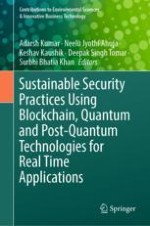This book focuses on the sustainable security practices in the domain of blockchain, quantum, and post-quantum technologies dealing with the real-time applications. The topics discussed in this book include banking applications, protection of digital assets in healthcare, military defense applications, supply chain management, secure messaging, and keyless secure infrastructures.
Blockchains and quantum technologies are the emerging technological developments both in academic and industrial domains. The problems related to quantum threat and execution of post-quantum signatures in a blockchain platform have become hot topics in today's scientific community because they have remarkably progressed in recent years and have found a variety of applications.
This book is a valuable resource for academicians, researchers, students, and technicians in the field of blockchain and quantum computing.
